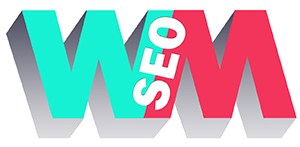Creating a website from scratch might seem daunting, but with the right guidance, you can build a simple yet functional website using HTML, CSS, and JavaScript. This guide will walk you through the fundamental steps of designing and developing a website on your desktop or laptop.
1. Setting Up Your Development Environment
Before you start coding, you need a few essential tools:
- Text Editor: Use a text editor to write your code. Popular options include Visual Studio Code, Sublime Text, or Atom.
- Web Browser: You’ll need a web browser to view and test your website. Chrome, Firefox, or Edge are all suitable choices.
Installation Steps:
- Download and Install a Text Editor: Choose and install a text editor that suits your preferences.
- Create a Project Folder: Create a new folder on your desktop or laptop where you’ll store all your website files.
2. Understanding the Basics
HTML (Hypertext Markup Language) is used to structure your web content. CSS (Cascading Style Sheets) styles the HTML elements. JavaScript adds interactivity to your website.
2.1 Create Your HTML File
- Open your text editor and create a new file.
- Save the file as
index.htmlin your project folder.
Here’s a basic HTML template to start with:
<!DOCTYPE html>
<html lang=”en”>
<head>
<meta charset=”UTF-8″>
<meta name=”viewport” content=”width=device-width, initial-scale=1.0″>
<title>My First Website</title>
<link rel=”stylesheet” href=”styles.css”>
</head>
<body>
<header>
<h1>Welcome to My Website</h1>
</header>
<main>
<section>
<h2>About Me</h2>
<p>This is a paragraph about me.</p>
</section>
<section>
<h2>Contact</h2>
<p>Feel free to contact me via email.</p>
</section>
</main>
<footer>
<p>© 2024 My Website</p>
</footer>
<script src=”script.js”></script>
</body>
</html>
2.2 Create Your CSS File
- Create a new file in your text editor.
- Save the file as
styles.cssin your project folder.
Add some basic styles:
/* styles.css */
body {
font-family: Arial, sans-serif;
margin: 0;
padding: 0;
color: #333;
}
header {
background-color: #4CAF50;
color: white;
padding: 10px 0;
text-align: center;
}
main {
padding: 20px;
}
section {
margin-bottom: 20px;
}
footer {
background-color: #f1f1f1;
text-align: center;
padding: 10px;
position: fixed;
bottom: 0;
width: 100%;
}
2.3 Create Your JavaScript File
- Create a new file in your text editor.
- Save the file as
script.jsin your project folder.
Add a basic script:
// script.js
document.addEventListener(‘DOMContentLoaded’, function() {
alert(‘Welcome to my website!’);
});
3. Viewing Your Website
- Open your project folder and double-click
index.html. This will open your website in your default web browser. - Check the layout and make sure everything looks as expected.
4. Enhancing Your Website
4.1 Add More Content
Update index.html to include additional sections or content:
<section>
<h2>Gallery</h2>
<img src=”path/to/image.jpg” alt=”Sample Image”>
</section>
4.2 Style More Elements
Update styles.css to include styles for new elements:
img {
max-width: 100%;
height: auto;
display: block;
margin: 0 auto;
}
4.3 Add More Interactivity
Update script.js to include more JavaScript functionality:
document.addEventListener(‘DOMContentLoaded’, function() {
document.querySelector(‘h1’).addEventListener(‘click’, function() {
alert(‘You clicked the heading!’);
});
});
5. Debugging and Testing
- Use Browser Developer Tools: Right-click on your web page and select “Inspect” to open developer tools. This allows you to view HTML structure, CSS styles, and JavaScript errors.
- Validate Your Code: Use validators like the W3C Markup Validation Service for HTML and CSS Validation Service for CSS to ensure your code is error-free.
6. Publishing Your Website
To make your website accessible on the internet, you’ll need to host it. Here’s a simple way to publish:
- Choose a Hosting Provider: Services like GitHub Pages, Netlify, or Vercel offer free hosting for static websites.
- Upload Your Files: Follow the hosting provider’s instructions to upload your
index.html,styles.css, andscript.jsfiles.
7. Learning and Improving
- Explore More: As you get comfortable with HTML, CSS, and JavaScript, explore advanced topics like responsive design, animations, and frameworks.
- Online Resources: Utilize online tutorials, courses, and communities. Websites like MDN Web Docs, W3Schools, and freeCodeCamp are excellent starting points.
8. Continue Experimenting
Building a website from scratch using HTML, CSS, and JavaScript is a rewarding process that empowers you to create your own digital presence. By following this guide, you’ve laid the foundation for a simple website and gained essential skills in web development. Continue experimenting, learning, and refining your skills to create more sophisticated and interactive websites. Happy coding!


